Abstract
High-resolution examination of pulse sequences generated by single visual cortex cells of the rhesus monkey in response to precisely controlled visual stimuli has disclosed (i) that the outputs of such neurons contain highly improbable (P less than 10(-7) numbers of identical triplets of precisely repeating pulse patterns; (ii) that the precision of such matches is better than 1/6000th of a second; (iii) that there is a similarly improbable high number of precisely matching pairs of triplets and anti-triplets, about half of which are present in symmetrical quadruplets of the form A-B-A, and that precisely replicating quadruplets and quintuplets are similarly generated in improbably large numbers; (iv) that identical triplets occur highly preferentially during immediately succeeding presentation of the same stimulus to the eye; and (v) that identical triplet (and doublet) patterns occur much more frequently in the responses of the same nerve when the eye receives identical or similar stimuli in different experiments than when dissimilar stimuli are applied. From these findings it is concluded (i) that the high precision of pattern replication required for triplets of pulses in time to serve to encode specific inputs and to permit their decoding through spatial summation is met (observations i-iii); (ii) that stimulus-specific triplets symbolize components of responses to specific stimuli (observation iv); (iii) that a temporary memory store of previous responses exists (observations iv and v); and (iv) that the mammalian brain uses precise patterns of discharges in time to represent and store specific data, rather than statistical qualities associated with pulse trains to symbolize qualitative stimulus components.
Full text
PDF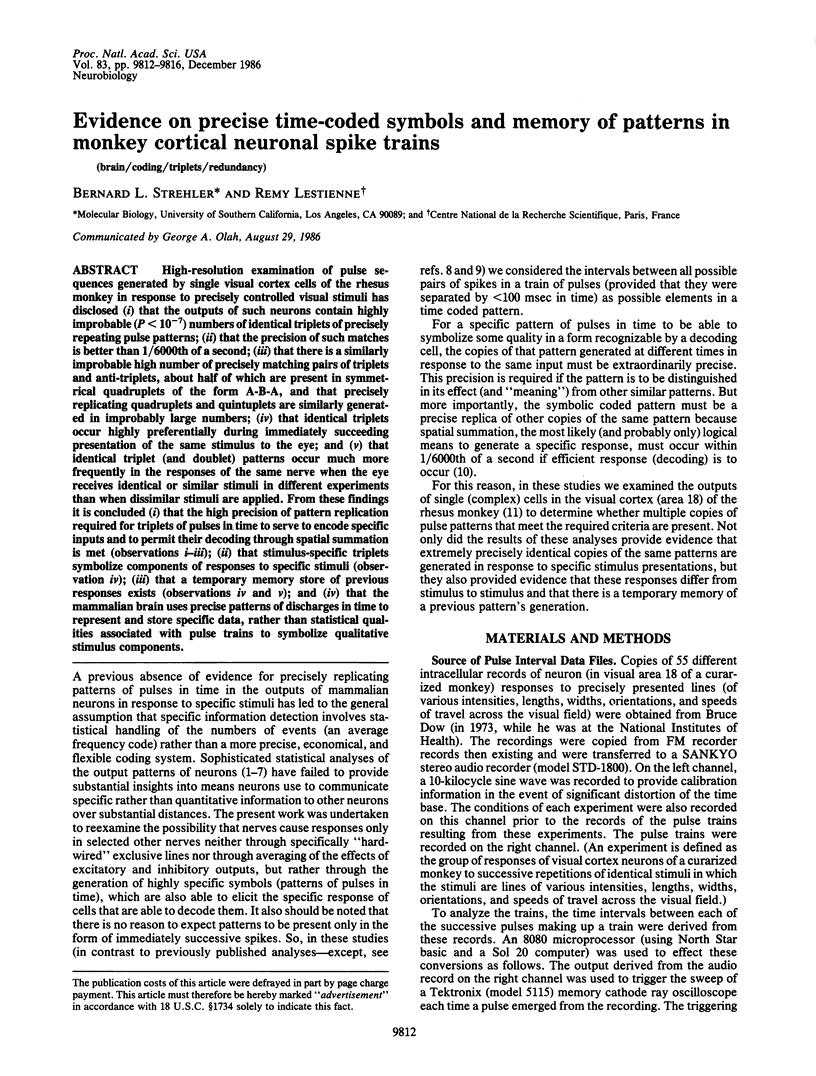
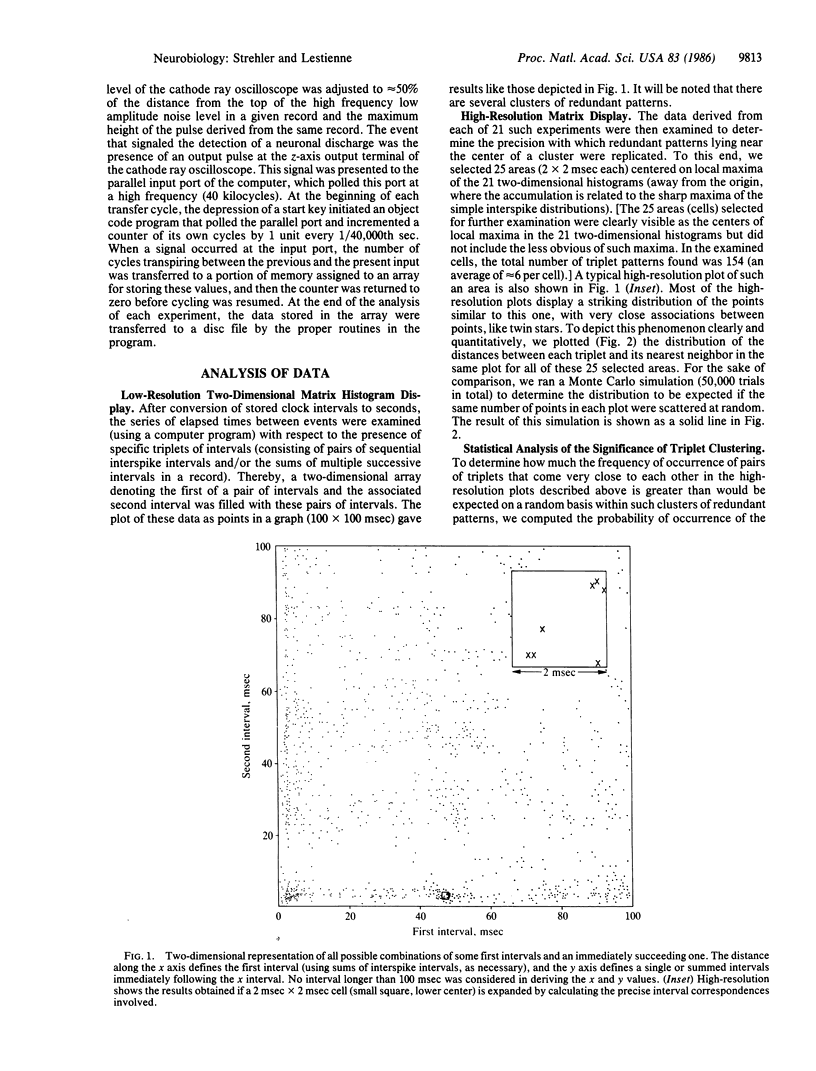
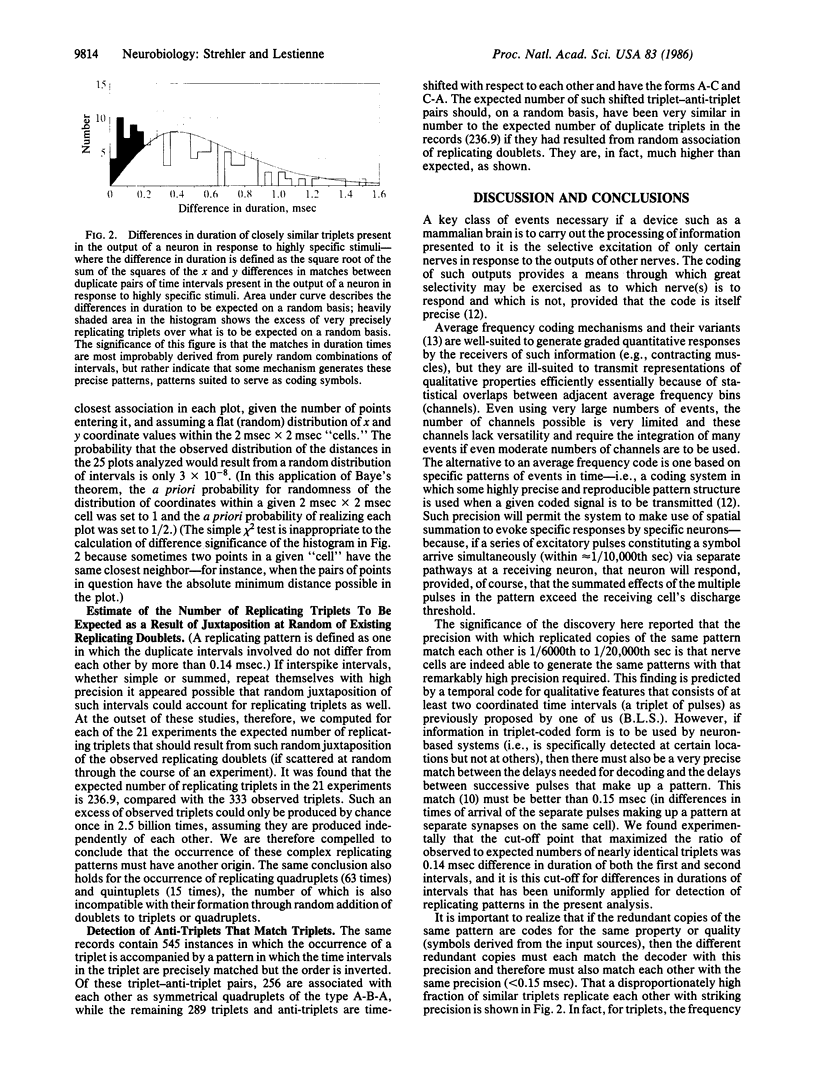
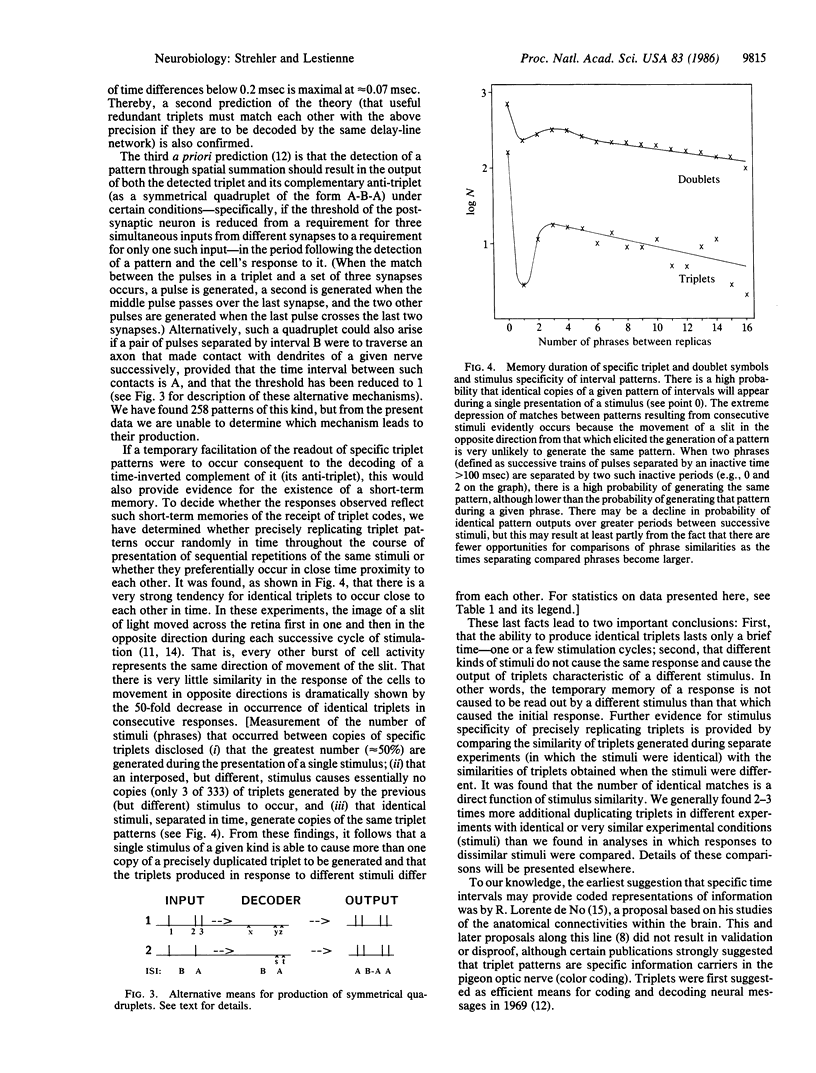
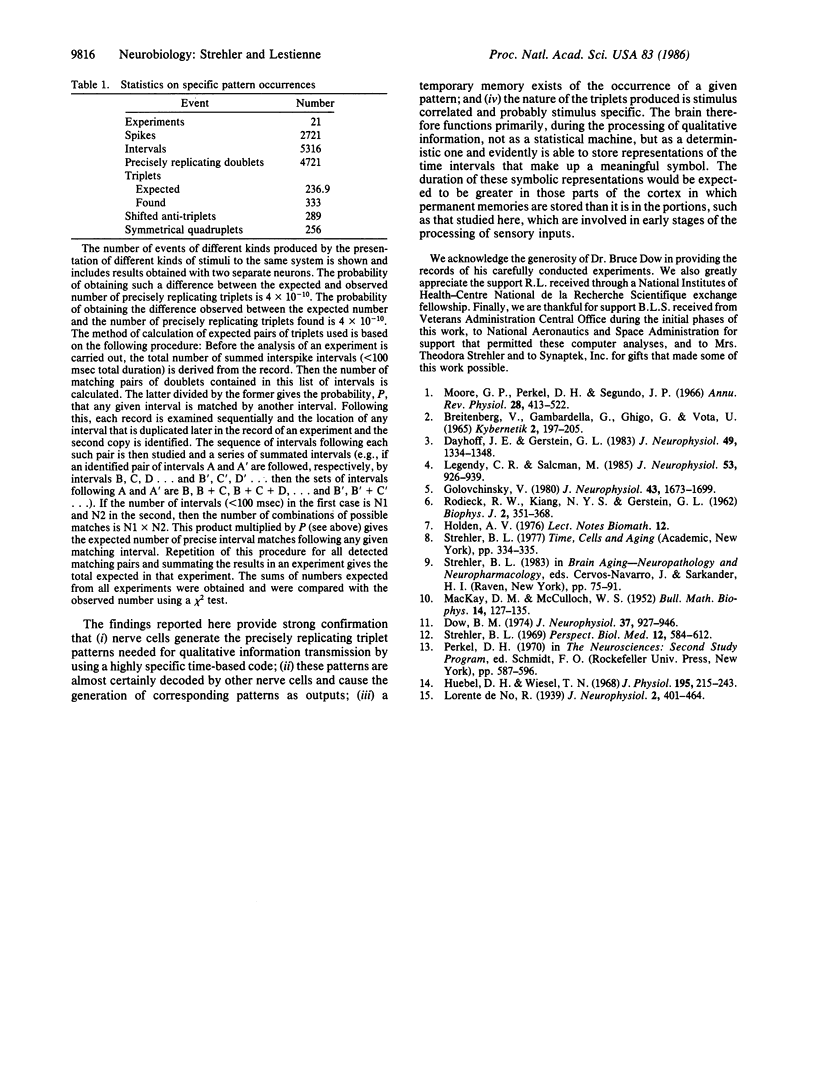
Images in this article
Selected References
These references are in PubMed. This may not be the complete list of references from this article.
- Braitenberg V., Gambardella G., Ghigo G., Vota U. Observations on spike sequences from spontaneously active Purkinje cells in the frog. Kybernetik. 1965 Jun;2(5):197–205. doi: 10.1007/BF00306415. [DOI] [PubMed] [Google Scholar]
- Dayhoff J. E., Gerstein G. L. Favored patterns in spike trains. I. Detection. J Neurophysiol. 1983 Jun;49(6):1334–1348. doi: 10.1152/jn.1983.49.6.1334. [DOI] [PubMed] [Google Scholar]
- Dow B. M. Functional classes of cells and their laminar distribution in monkey visual cortex. J Neurophysiol. 1974 Sep;37(5):927–946. doi: 10.1152/jn.1974.37.5.927. [DOI] [PubMed] [Google Scholar]
- Golovchinsky V. Patterns of responses of neurons in cuneate nucleus to controlled mechanical stimulation of cutaneous velocity receptors in the cat. J Neurophysiol. 1980 Jun;43(6):1673–1699. doi: 10.1152/jn.1980.43.6.1673. [DOI] [PubMed] [Google Scholar]
- Hubel D. H., Wiesel T. N. Receptive fields and functional architecture of monkey striate cortex. J Physiol. 1968 Mar;195(1):215–243. doi: 10.1113/jphysiol.1968.sp008455. [DOI] [PMC free article] [PubMed] [Google Scholar]
- Legéndy C. R., Salcman M. Bursts and recurrences of bursts in the spike trains of spontaneously active striate cortex neurons. J Neurophysiol. 1985 Apr;53(4):926–939. doi: 10.1152/jn.1985.53.4.926. [DOI] [PubMed] [Google Scholar]
- Moore G. P., Perkel D. H., Segundo J. P. Statistical analysis and functional interpretation of neuronal spike data. Annu Rev Physiol. 1966;28:493–522. doi: 10.1146/annurev.ph.28.030166.002425. [DOI] [PubMed] [Google Scholar]
- RODIECK R. W., KIANG N. Y., GERSTEIN G. L. Some quantitative methods for the study of spontaneous activity of single neurons. Biophys J. 1962 Jul;2:351–368. doi: 10.1016/s0006-3495(62)86860-x. [DOI] [PMC free article] [PubMed] [Google Scholar]
- Strehler B. L. Information handling in the nervous system: an analogy to molecular-genetic coderdecoder mechanisms. Perspect Biol Med. 1969 Summer;12(4):584–612. doi: 10.1353/pbm.1969.0010. [DOI] [PubMed] [Google Scholar]



